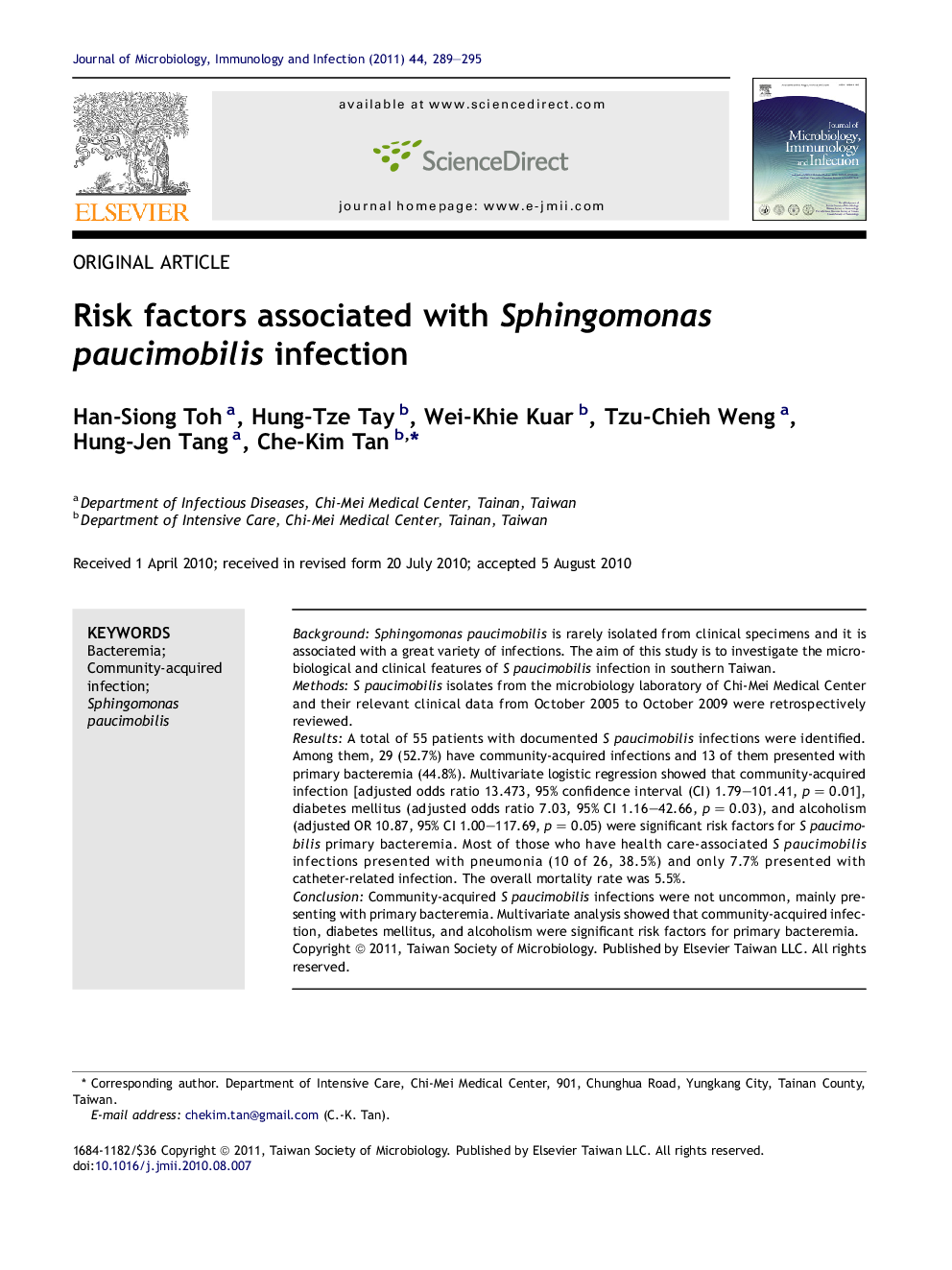| Article ID | Journal | Published Year | Pages | File Type |
|---|---|---|---|---|
| 3378378 | Journal of Microbiology, Immunology and Infection | 2011 | 7 Pages |
BackgroundSphingomonas paucimobilis is rarely isolated from clinical specimens and it is associated with a great variety of infections. The aim of this study is to investigate the microbiological and clinical features of S paucimobilis infection in southern Taiwan.MethodsS paucimobilis isolates from the microbiology laboratory of Chi-Mei Medical Center and their relevant clinical data from October 2005 to October 2009 were retrospectively reviewed.ResultsA total of 55 patients with documented S paucimobilis infections were identified. Among them, 29 (52.7%) have community-acquired infections and 13 of them presented with primary bacteremia (44.8%). Multivariate logistic regression showed that community-acquired infection [adjusted odds ratio 13.473, 95% confidence interval (CI) 1.79–101.41, p = 0.01], diabetes mellitus (adjusted odds ratio 7.03, 95% CI 1.16–42.66, p = 0.03), and alcoholism (adjusted OR 10.87, 95% CI 1.00–117.69, p = 0.05) were significant risk factors for S paucimobilis primary bacteremia. Most of those who have health care-associated S paucimobilis infections presented with pneumonia (10 of 26, 38.5%) and only 7.7% presented with catheter-related infection. The overall mortality rate was 5.5%.ConclusionCommunity-acquired S paucimobilis infections were not uncommon, mainly presenting with primary bacteremia. Multivariate analysis showed that community-acquired infection, diabetes mellitus, and alcoholism were significant risk factors for primary bacteremia.
